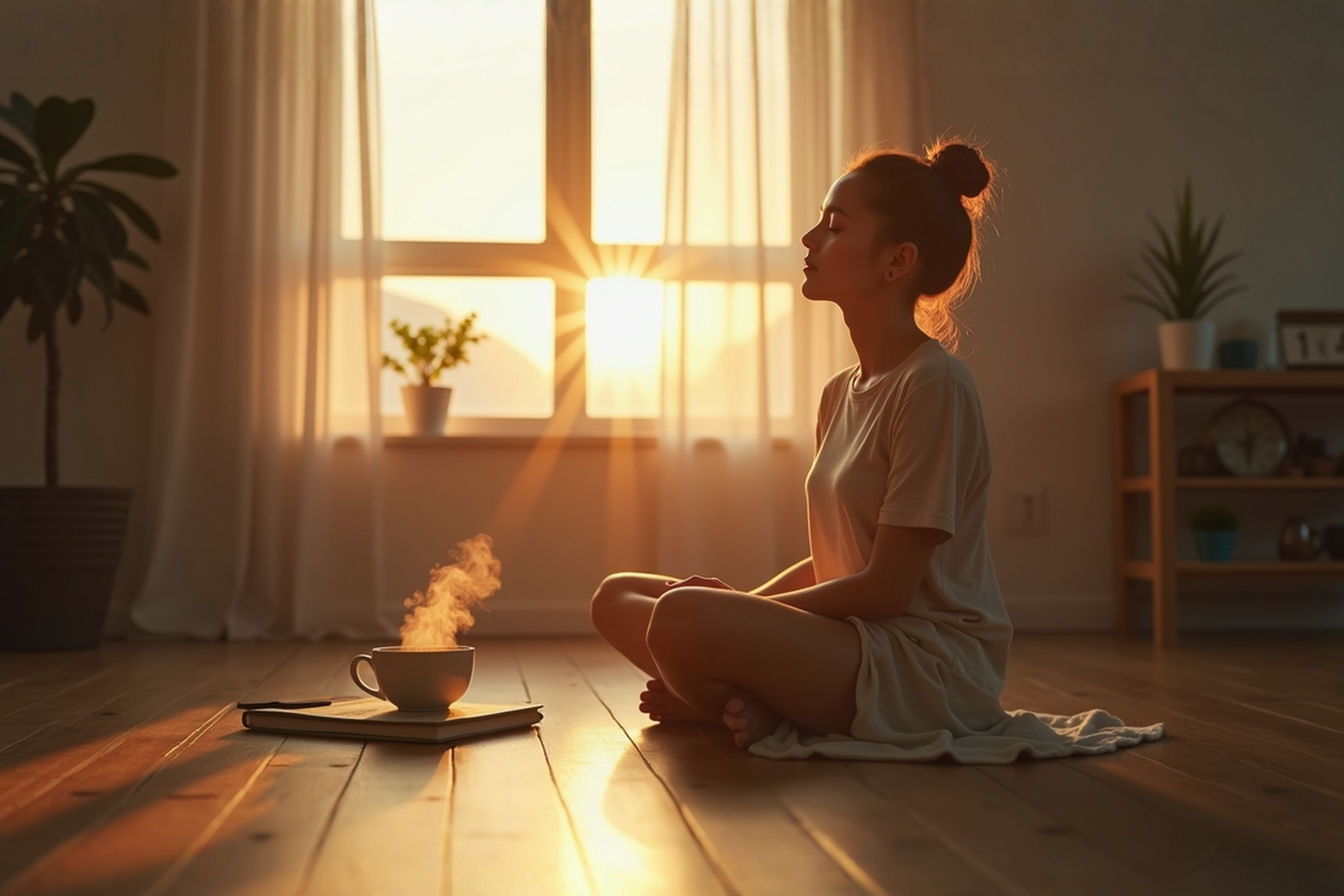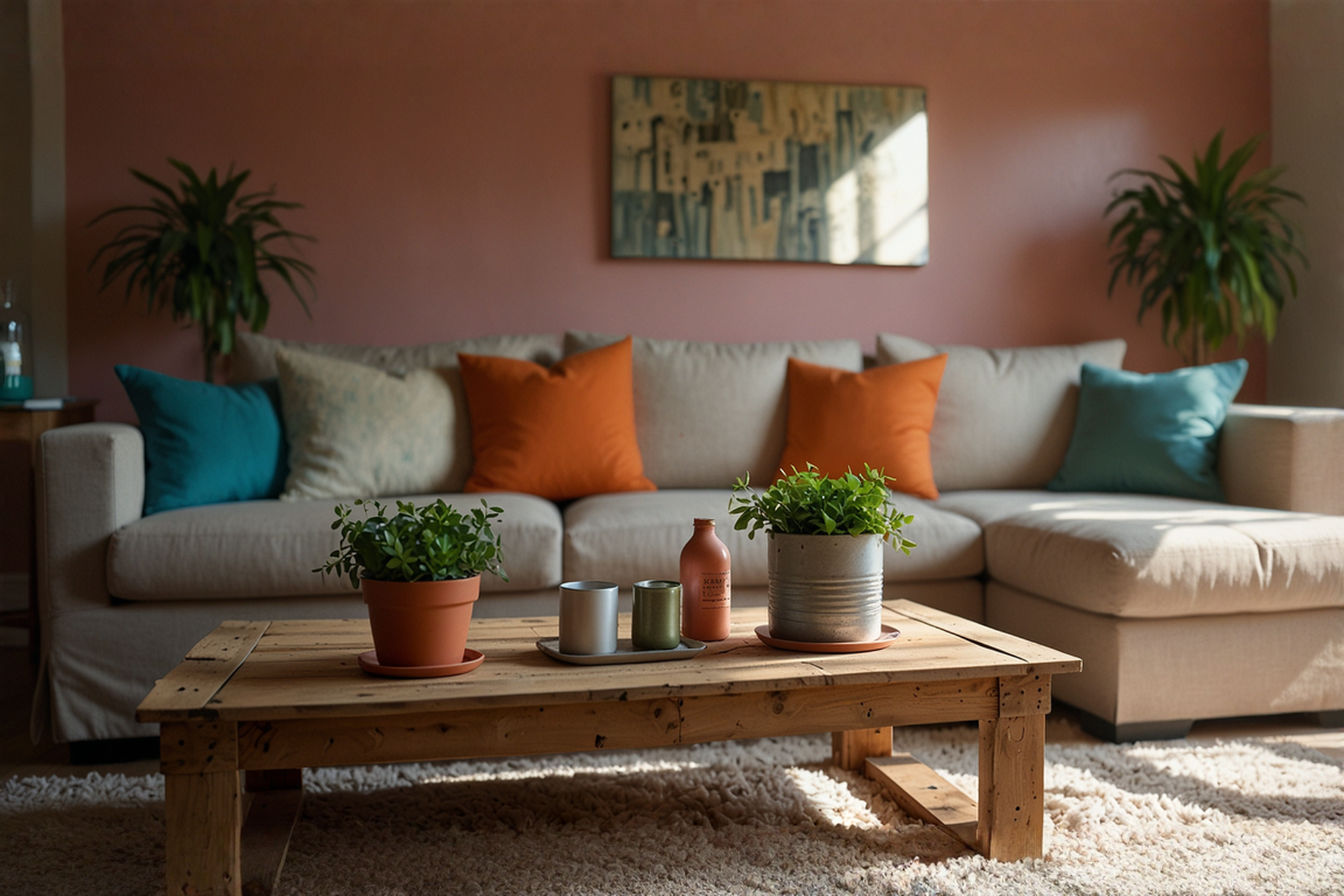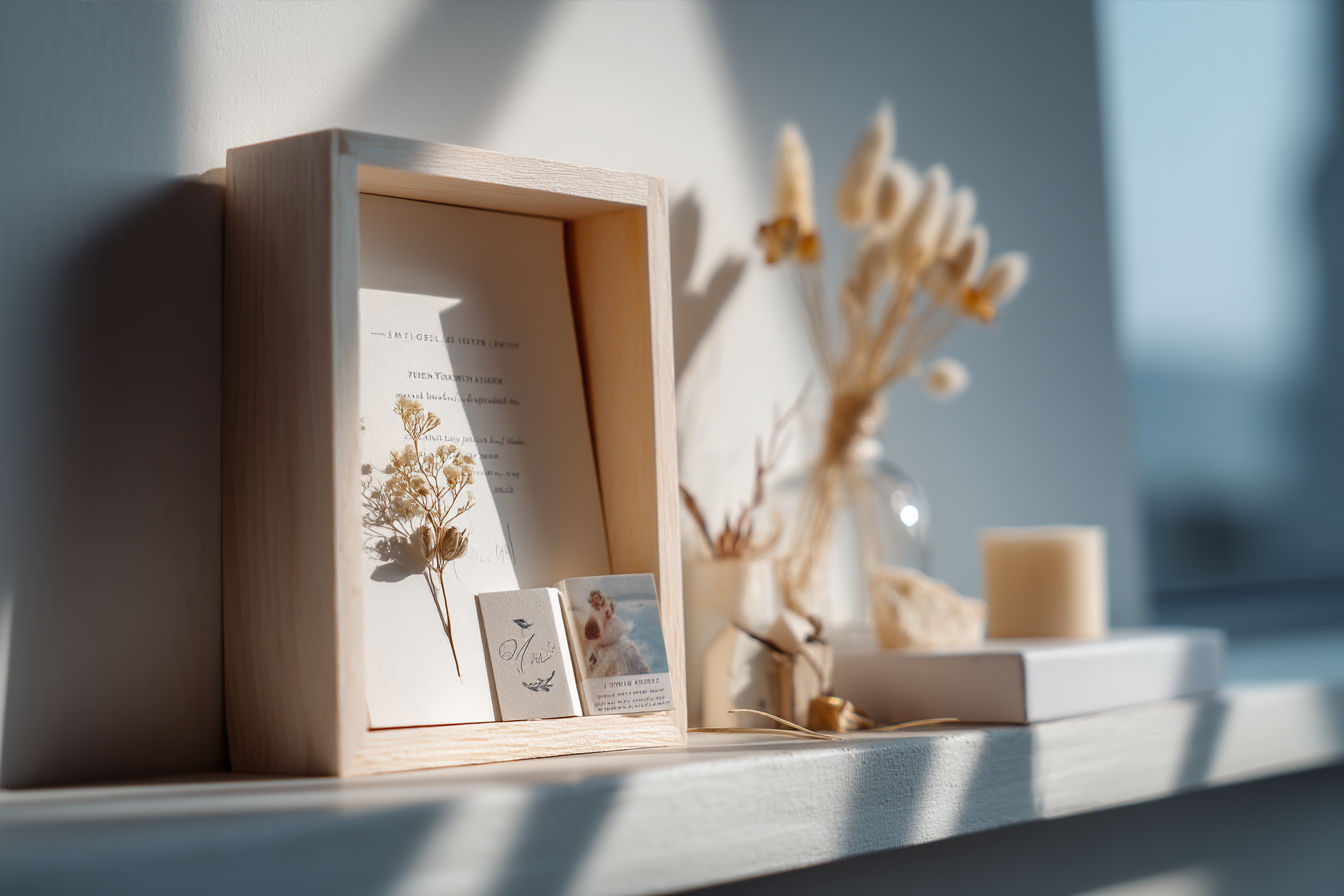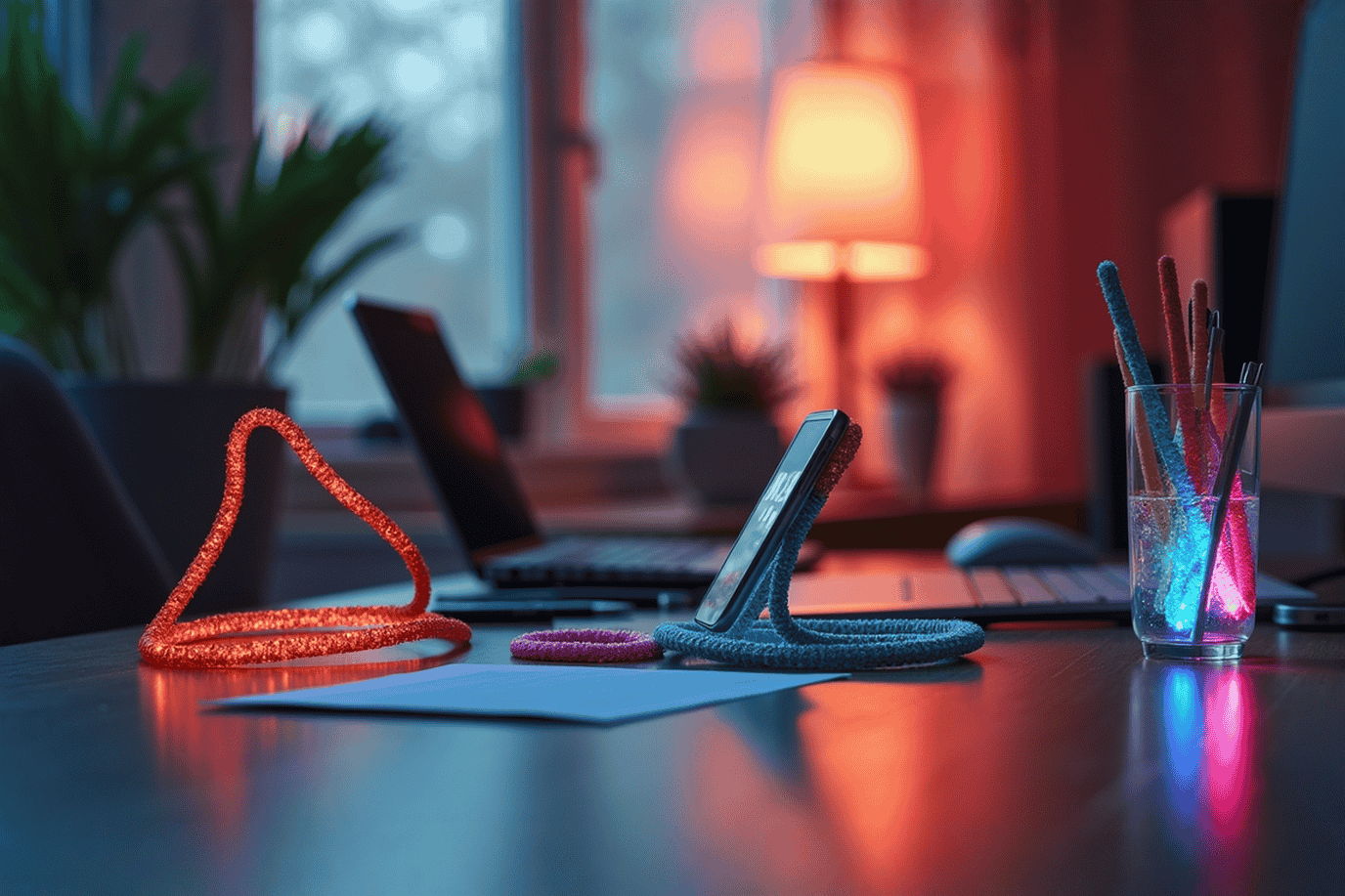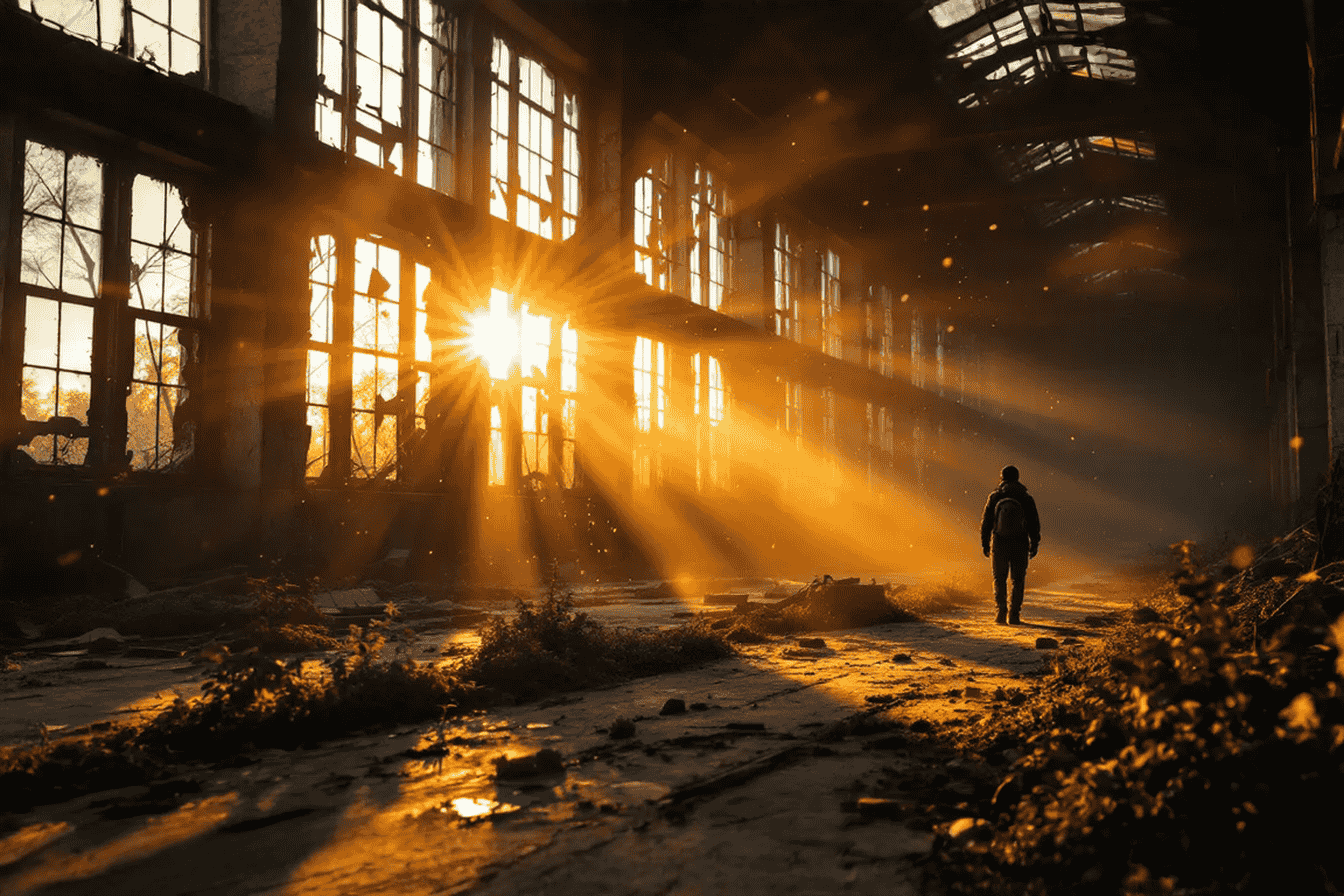This post may contain affiliate links. If you make a purchase through these links, we may earn a commission at no additional cost to you.
That empty wine bottle sitting in your recycling bin holds untapped creative potential. Rather than discarding these elegant glass vessels, imaginative crafters are turning them into stunning decorative pieces through the art of bottle painting. This sustainable craft movement has gained tremendous popularity among DIY enthusiasts and home decorators alike, offering an eco-friendly way to create unique decor that reflects personal style.
In this comprehensive guide, we’ll explore sixteen remarkable transformations that breathe new life into ordinary wine bottles. From sophisticated monochrome designs to functional lamps and planters, these projects span various skill levels and aesthetic preferences. Each transformation provides an opportunity to express creativity while contributing to environmental sustainability through thoughtful upcycling.
Getting Started: Essential Supplies and Preparation
Successful wine bottle art begins with proper preparation and quality materials. The smooth glass surface presents unique challenges that require specific techniques and supplies to overcome.
Essential materials for painted wine bottle projects include:
Glass paint (acrylic enamel, chalk, or specialized glass paints) Fine and medium paintbrushes Painter’s tape for clean edges Rubbing alcohol for surface preparation Goo Gone or similar for stubborn label removal Steel wool or fine-grit sandpaper Clear sealer (polyurethane or specialized glass sealer) Optional embellishments (twine, gems, fabric, etc.)
Before applying a single brushstroke, proper bottle preparation ensures paint adhesion and project longevity. Start by removing all labels and adhesive residue using warm, soapy water and a scraper. For persistent adhesive, apply Goo Gone and let it sit before scrubbing. Next, thoroughly wash bottles with dish soap and rinse completely.
The critical preparation step many novices overlook involves degreasing the glass surface. Wipe down the entire bottle with rubbing alcohol, which removes oils from fingerprints and manufacturing residues that can prevent paint from adhering properly. For projects requiring maximum durability, lightly scuff the bottle surface with fine steel wool to create microscopic texture that helps paint bond more effectively.
Selecting the right paint dramatically impacts your project’s success. While standard craft acrylics may work with proper sealing, specialized glass paints offer superior adhesion and durability. Many crafters prefer chalk paint for its excellent coverage and matte finish, while acrylic enamel paints provide vibrant colors with strong adhesion properties. For food-adjacent projects, ensure any products used are non-toxic when cured.
Classic Painted Wine Bottle Transformations
1. Elegant Monochrome Bottles
Sophistication often emerges from simplicity. Monochrome bottle designs create striking decorative elements that complement virtually any interior style. This approach focuses on a single color paired with various textures and finishes rather than intricate patterns.
To achieve depth in monochrome designs, experiment with textural techniques like stippling, dry brushing, or using sea sponges to create subtle pattern variations. These methods add visual interest while maintaining the streamlined aesthetic of a single-color palette. Consider metallic accents in the same color family to introduce subtle dimension without breaking the monochromatic theme.
These refined bottles shine when displayed in minimalist settings. Group bottles of varying heights in matching colors for an architectural statement, or place a single tall bottle as a striking accent piece. Their versatility allows them to serve as sophisticated decor in entryways, on mantels, or as dining table centerpieces.
2. Rustic Farmhouse Painted Bottles
The weathered charm of farmhouse style finds perfect expression in painted wine bottle projects. These designs embrace imperfection through distressed finishes and muted color palettes that evoke nostalgic countryside aesthetics.
Creating authentic rustic appeal requires specific techniques. Start with a base coat in cream, sage, or muted blue, then apply a second contrasting color. Once dry, strategically sand edges and raised areas to reveal the underlying color, mimicking natural wear patterns. Enhance the aged appearance by lightly dry brushing with brown or gray paint to simulate dust collection in crevices.
These bottles pair beautifully with natural elements like dried wheat stalks, cotton stems, or preserved eucalyptus. Display them on wooden shelving, atop distressed furniture, or clustered on kitchen windowsills to enhance their countryside charm. The subtle variations in each bottle’s distressing create a collected-over-time appearance that defines authentic farmhouse style.
3. Mediterranean-Inspired Bottle Art
Transport yourself to sun-drenched coastal villages with Mediterranean-inspired painted bottles. Characterized by vibrant blues, crisp whites, and geometric patterns, these designs evoke the architectural elements and natural beauty of Greece, Spain, and Italy.
Achieving precise patterns demands careful technique. Start with a solid white base coat, then use painter’s tape to create clean geometric shapes like Greek key patterns, Moroccan tiles, or Spanish florals. Deep cobalt blue against stark white creates the classic Mediterranean contrast, though turquoise and terracotta combinations offer beautiful variations.
These statement pieces deserve prominent display. Group them on a sunlit windowsill where light enhances their vibrant colors, or arrange them as a dining table centerpiece with citrus fruits and olive branches for an immersive Mediterranean tablescape. Their distinctive appearance makes them conversation-starting decor elements in any space.
4. Seasonal Holiday Bottle Decorations
Holiday-themed painted bottles offer endless opportunities for festive decor that can be stored and reused year after year. From Christmas to Halloween to patriotic celebrations, these custom creations adapt to every seasonal occasion.
For winter holidays, snow-frosted bottles with metallic accents create magical candlelight effects. Apply textured snow techniques using dimensional paint or actual texture medium, then highlight with subtle glitter or metallic dry brushing. Autumn celebrations benefit from bottles in rich amber, burgundy, and burnt orange with metallic leaf accents.
Display strategies should adapt to each holiday’s spirit. Christmas bottles shine when incorporated into mantel displays with greenery and twinkling lights. Halloween designs make striking porch decorations when fitted with candles or string lights. Group patriotic bottles with sparklers or small flags for Fourth of July gatherings. The versatility of these seasonal transformations ensures your holiday decor remains fresh and personalized throughout the year.
Themed Painted Wine Bottle Collections
5. Botanical Garden Bottles
Bring the enduring beauty of flora indoors with botanical-themed painted wine bottles. These nature-inspired designs capture the delicate details of flowers, leaves, and garden scenes on glass canvases that never wilt or fade.
Creating lifelike botanical elements requires layered painting techniques. Begin with a soft, neutral background like cream, pale green, or sky blue. For flowers, work from the center outward, building petals with increasingly lighter shades to create dimension. Leaves benefit from a similar approach, starting with darker base colors and adding lighter veining and highlights. Consider using actual leaves as stencils by painting the underside and pressing them against the bottle surface.
Botanical bottles create maximum impact when displayed in collections that tell a cohesive story. Group spring flower designs together for a garden-inspired vignette, or create a progressive display showing various growth stages of a single plant type. These natural designs complement indoor plant collections and bring garden charm to spaces where live plants might struggle.
6. Coastal Beach-themed Bottles
Capture the serene essence of shoreline landscapes through beach-themed painted wine bottles. These designs incorporate the colors, textures, and elements of coastal environments to create tranquil decorative pieces for any home.
Achieving authentic beach aesthetics requires specialized techniques. Create realistic sand texture by mixing fine sand with matte medium and applying it to the bottle’s lower portion. For ocean effects, layer various blue shades using a sea sponge to create natural blending. Add white caps with a dry brushing technique. Enhance coastal authenticity with small shells, bits of netting, or twine accents secured with clear adhesive.
These bottles excel as bathroom decor, creating spa-like environments when grouped with seashells and natural sponges. They also make perfect summer dining table centerpieces, especially when filled with small battery-operated string lights to mimic the glow of beachfront evenings. Their versatility allows them to transition seamlessly between casual beach cottage styles and more sophisticated coastal-inspired interiors.
7. Celestial Night Sky Bottles
The mystery and majesty of the night sky provides endless inspiration for breathtaking bottle art. Celestial designs transform wine bottles into cosmic wonderlands featuring galaxies, stars, and planetary scenes that seem to glow from within.
Creating convincing space scenes requires specific painting methods. Begin with a deep black or navy base coat for the backdrop of space. Use a sponge to dab on nebula effects with purples, blues, and pinks, building layers for depth. Create stars with white paint splattered using a toothbrush or stiff brush for natural randomness. For larger stars, use the end of a paintbrush to create perfect dots, adding tiny white crosses for twinkle effects.
These magical bottles deserve display methods that enhance their otherworldly qualities. Position them where light can shine through partially transparent areas for a glowing effect. They make spectacular bedside table decorations, especially in children’s rooms or creative spaces. For maximum impact, install mini LED lights inside to illuminate the cosmic scenes from within, creating an enchanting nightlight or ambient room lighting.
8. Vintage Typography Bottles
Words and phrases transform ordinary bottles into meaningful decorative pieces with vintage typography treatments. These text-focused designs combine artistic lettering with aged finishing techniques to create bottles that tell stories through both words and visual style.
Transferring text to curved glass surfaces presents unique challenges. For precision, create custom stencils using adhesive vinyl cut with craft machines or by hand. Alternatively, use transfer techniques where designs are printed in reverse on special paper, then burnished onto prepared bottles. Hand-lettering directly on bottles requires steady technique but offers the most authentic vintage appearance.
Creating authentic vintage appeal involves aging treatments after lettering is complete. Apply light antiquing wax to settle into letter edges and crevices, then gently wipe away excess from raised surfaces. Consider sanding edges lightly to simulate wear, then finish with matte sealer rather than glossy for period-appropriate appearance.
These typographic pieces serve as meaningful decor in home offices, reading nooks, or inspirational spaces. They make thoughtful personalized gifts featuring favorite quotes, family mottos, or commemorative dates. Display them where the text can be easily read and appreciated, perhaps on floating shelves or desk surfaces where they serve as daily motivation.
Functional Painted Wine Bottle Transformations
9. Illuminated Bottle Lamps
Beyond purely decorative applications, painted wine bottles transform into functional lighting elements that combine artistry with practicality. These illuminated creations serve as both light sources and distinctive art pieces in home decor.
Creating effective bottle lamps requires balancing aesthetic designs with lighting considerations. Paint designs should incorporate strategic transparency allowing light to shine through in planned patterns. Drilling techniques require specialized glass drill bits used at slow speeds with constant water cooling to prevent cracking. For safer alternatives, consider LED cork lights or fairy light strings that insert into bottles without modification.
Safety remains paramount when creating electrical items. Only use low-heat LED lighting sources inside painted bottles to prevent fire hazards. Ensure all electrical components receive proper insulation and use UL-listed lamp kits designed specifically for bottle conversion. These precautions create safe, durable lighting elements that function reliably for years.
Illuminated bottles create magic in numerous settings. Use them as subtle night lighting in hallways or bathrooms, as ambient mood lighting in living spaces, or as conversation-starting table lamps in guest rooms. Their dual function as art and illumination makes them particularly valuable in small spaces where items must serve multiple purposes.
10. Decorative Vases and Planters
The natural shape of wine bottles makes them ideal candidates for transformation into elegant vases and planters. With proper preparation and thoughtful design, these glass vessels become functional containers that display flowers or support plant life.
Converting bottles to water-holding vases requires specific approaches. For cut flower vases, designs should concentrate on the bottle’s exterior, leaving the interior unpainted for water contact. Apply multiple protective sealer coats to prevent paint damage from water splashes. For bottles that will contact moisture regularly, consider using waterproof marine varnish as the final sealing layer.
Planter conversions present different challenges. For water-propagating plants like pothos or philodendron, designs should enhance rather than obscure root visibility. For soil plantings, bottles must be cut safely to create appropriate openings. This process requires specialized glass cutting tools or techniques like hot-and-cold water alternation to create clean breaks along score lines.
These functional vessels showcase their versatility throughout homes. Propagation bottles make perfect windowsill displays in kitchens or sunny bathrooms. Decorative vases shine as dining table centerpieces or mantel accents. Their combination of beauty and functionality makes them particularly valuable decor elements that serve genuine household purposes while adding artistic appeal.
11. Table Centerpiece Collections
Cohesive bottle collections create dramatic focal points for entertaining spaces. These curated groupings transform ordinary dining or coffee tables into designer-worthy vignettes through coordinated designs and thoughtful arrangement.
Creating successful centerpiece collections requires design cohesion with enough variation to maintain visual interest. Consider using consistent color palettes while varying patterns, or maintain similar patterns while exploring different color combinations. Height variation proves essential for dynamic arrangements – include bottles of different heights or place some on elevated surfaces like small stands or books.
Seasonal adaptation allows these centerpieces to remain relevant year-round. Create base designs that accommodate seasonal additions like fresh or dried flowers, twigs, ornamental grasses, or specialized lighting elements. This adaptability ensures your centerpiece investment continues delivering visual impact through changing seasons and occasions.
For maximum effect, consider the dining experience when arranging bottle centerpieces. Ensure designs remain visible from all seating positions and avoid heights that obstruct cross-table conversation. Create intentional negative space within arrangements to prevent overwhelming visual clutter. These considerations elevate bottle centerpieces from mere decorations to thoughtfully designed elements of the dining environment.
12. Outdoor Garden Bottle Décor
Painted wine bottles venture beyond interior spaces to enhance garden areas with color and artistic elements. These outdoor transformations require specialized techniques to withstand environmental challenges while adding decorative appeal to natural settings.
Weather resistance becomes the primary consideration for outdoor bottle art. Select exterior-grade sealing products with UV protection to prevent color fading from sun exposure. Multiple sealer layers create necessary protection against moisture damage. Consider designs that actually improve with weathering, incorporating intentional patina effects that enhance rather than detract from the bottle’s appearance over time.
Garden integration techniques help bottles complement rather than compete with natural elements. Semi-transparent color washes allow bottles to capture and reflect natural light changes throughout the day. Consider designs inspired by actual garden elements like leaf patterns, flower colors, or ground textures for harmonious incorporation.
Placement strategies significantly impact outdoor bottle displays. Edge garden beds with partially buried bottles for defining boundaries with artistic flair. Create visual surprise by placing colorful bottles among foliage where they’ll be discovered rather than immediately obvious. For dramatic effect, position bottles near water features where their reflections double their visual impact.
Advanced Technique Transformations
13. Textured Relief Bottle Art
Dimensional designs elevate painted wine bottles into sculptural art pieces. These advanced projects incorporate actual texture beyond visual techniques, creating tactile experiences that invite touch while making bold visual statements.
Creating effective relief requires specialized materials and methods. Modeling paste or textured medium applied with palette knives creates controlled dimensional elements, while textured spray products offer more random organic patterns. Allow these materials to fully cure before applying paint layers to prevent cracking or separation.
Dimensional designs require specific painting approaches that enhance rather than obscure texture. Dry brushing technique works particularly well, where paint-loaded brushes skim across raised elements while leaving recessed areas darker. This creates natural highlighting that emphasizes the three-dimensional quality. Consider metallic highlighting on raised portions to further enhance the sculptural effect.
These textural bottles demand display methods that invite appreciation from multiple angles. Position them where natural or artificial light creates shadow play across textured surfaces, enhancing dimensional aspects. Avoid crowding these pieces, instead giving each sufficient visual space to be appreciated as individual sculptural works rather than merely decorated bottles.
14. Metallic and Gilded Bottle Designs
The luminous quality of metallic finishes transforms ordinary glass bottles into vessels with the appearance of precious metal. These luxurious transformations create high-impact decorative elements that reflect light and add opulent touches to interior spaces.
Achieving authentic metallic effects requires specific materials and techniques. True metal leaf (gold, silver, or copper) creates the most authentic appearance but requires specialized adhesive size and careful application. Metallic paints offer easier application but vary dramatically in quality – look for those containing actual metal particles rather than simply metallic coloring for superior light reflection properties.
Creating dimension within metallic finishes prevents the flat appearance that can make objects appear simply spray-painted. Consider antiquing techniques where dark wax or glaze settles into crevices while being buffed from raised areas. Alternatively, create intentional patina effects on copper or bronze finishes using chemical solutions designed for controlled oxidation.
These glamorous bottles deserve placement in areas where they’ll capture and reflect light. Position them near windows for natural light play or use directional accent lighting to highlight their reflective qualities. They pair beautifully with mirror surfaces or glass tables that multiply their luminous effects. For maximum impact, incorporate them into special occasion tablescapes where their luxurious appearance elevates the entire design.
15. Stained Glass Effect Bottles
The magical interaction between light and color defines stained glass effect bottles. These transformations mimic the translucent beauty of traditional stained glass through specialized painting techniques that allow light transmission through carefully planned color sections.
Creating convincing stained glass effects requires transparency management. Rather than opaque paint application, these designs use alcohol-based glass stains or specially formulated translucent glass paints. Apply these in controlled sections divided by “leading lines” created with dimensional black paint or actual leading tape. The result allows light to filter through colored sections while being blocked by dividing lines.
Design considerations should account for how light will interact with the finished piece. Consider the bottle’s likely position and light sources when planning color placement. Deeper colors create more dramatic light effects but reduce overall light transmission. Strategic clear glass sections maximize the stained-glass visual effect while maintaining sufficient light flow.
These bottles reach their full potential when properly illuminated. Position them in direct sunlight like window ledges for natural light projection effects. Alternatively, create displays with controllable backlighting where LED lights positioned behind bottles create glowing showcases. Their transformative effect on ambient light makes them particularly valuable in spaces lacking natural illumination.
16. Mixed Media Bottle Artistry
The most advanced bottle transformations transcend paint alone to incorporate multiple artistic elements. These mixed media creations combine various materials and techniques to produce truly unique art objects that defy conventional categorization.
Successful material integration requires thoughtful planning and appropriate adhesives. For fabric elements, textile medium creates a paintable surface that bonds securely to glass when heat-set. Metal components require two-part epoxy specifically formulated for non-porous surfaces. Natural elements like dried flowers or leaves need preservation with clear medium before attachment to prevent deterioration over time.
Design balance becomes crucial in mixed media work. Create visual focal points that guide the eye rather than competing elements that create visual chaos. Consider the three-dimensional experience of bottles as objects viewed from multiple angles, ensuring all perspectives offer intentional design elements rather than unfinished areas.
These complex creations deserve display as legitimate art pieces rather than mere decorative objects. Consider glass display cases for particularly intricate works, or mount on small stands that elevate them from surrounding surfaces. Directional lighting helps highlight dimensional aspects and material variations. Their unique character makes them conversation-starting focal points in any thoughtfully designed interior space.
Care and Display of Painted Wine Bottles
Preserving the beauty of your painted bottle creations requires proper maintenance and display consideration. These finished art pieces need protection from environmental factors that could damage their appearance or structural integrity.
Cleaning painted bottles requires gentle approaches that protect decorative elements. Dust with soft microfiber cloths rather than paper products that might scratch surfaces. For deeper cleaning, slightly dampen cloths with water only – avoid chemical cleaners that might damage paint or sealants. Never submerge fully painted bottles in water, regardless of sealing methods used.
Display location significantly impacts bottle longevity. Avoid areas with temperature fluctuations that stress glass and paint bonds. Direct sunlight exposure accelerates color fading even with UV-protective sealants, so rotate bottles periodically or use UV-filtering window films in display areas. Humidity considerations matter particularly for bottles with natural material elements that might develop mold in consistently damp environments.
Protective measures extend display life substantially. Consider glass cabinets for particularly valuable pieces, especially in homes with children or pets. For table displays, small non-slip mats beneath bottles prevent accidental tipping. These precautions ensure your artistic investments continue bringing beauty to your spaces for years to come.
Conclusion
The transformation of ordinary wine bottles into extraordinary decorative elements represents the perfect intersection of creativity, sustainability, and personal expression. These sixteen distinctive approaches demonstrate the remarkable versatility of glass bottle canvases and their ability to complement virtually any interior style or function.
Beyond their aesthetic appeal, painted wine bottle projects offer meaningful environmental benefits. Each repurposed bottle represents reduced landfill waste and manufacturing demand, making these creative endeavors as responsible as they are beautiful. The satisfaction of creating unique decor from reclaimed materials adds deeper meaning to the finished pieces.
The techniques explored here provide structured starting points, but the true magic emerges through personal experimentation and style expression. Allow these approaches to inspire rather than limit your creative exploration. The most successful bottle transformations ultimately reflect the individual artist’s unique perspective, creating truly one-of-a-kind pieces impossible to replicate through mass production.
FAQs About Painted Wine Bottle Transformations
How long does paint typically last on wine bottles? With proper preparation and sealing, paint can last indefinitely on wine bottles kept indoors. Outdoor bottles require resealing every 1-2 years to maintain appearance. The quality of materials significantly impacts longevity – premium glass paints and sealers deliver superior durability compared to standard craft products.
Can painted wine bottles be washed? Fully sealed painted bottles can be gently wiped with damp cloths but should never be submerged or dishwashed. Even with excellent sealing, water immersion risks paint separation over time. For bottles requiring interior cleaning, use bottle brushes with minimal water and dry thoroughly immediately afterward.
What paint adheres best to glass surfaces? Specialized glass paints create the strongest bonds with glass surfaces. Brands like Pébéo Vitrea 160, DecoArt Glass Paint, and Martha Stewart Glass Paint offer excellent adhesion with proper curing. For approaches not requiring transparency, chalk paint adheres exceptionally well to properly prepared glass surfaces.
How can I fix mistakes in my bottle painting? Fresh paint mistakes can be quickly wiped away with alcohol-soaked cotton swabs. For dried paint errors, carefully scrape away with razor blades held at shallow angles to avoid scratching the glass. Larger mistakes sometimes require starting over – acetone removes most paint types but requires thorough ventilation and protective gear during use.
Are painted wine bottles food safe? Standard painted bottles should not contact food or drinkable liquids. For food-adjacent uses like olive oil dispensers, use only non-toxic, FDA-approved glass paints and sealers specifically labeled for food contact surfaces. These specialized products require particular curing methods, usually involving oven heating to specific temperatures, to achieve food-safe status.

